Next: Conclusions Up: Fourier Theory on the Previous: Higher-Order Filters
Let us now discuss the possibility of constructing infinite-order filters
with compact support. As was mentioned before, it would be an interesting
thing to have the definition of an infinite-order linear low-pass filter.
If we consider the linear low-pass filter of order ![]() and a fixed range
and a fixed range
![]() , that can be described in terms of the inner-analytic functions
as
, that can be described in terms of the inner-analytic functions
as
it is natural to ask that happens if we take the ![]() limit. This
cannot be described simply as an infinite iteration of the first-order
linear filter, since the limiting process changes the range of that filter
to zero. On the other hand, all the filtered complex functions
limit. This
cannot be described simply as an infinite iteration of the first-order
linear filter, since the limiting process changes the range of that filter
to zero. On the other hand, all the filtered complex functions
![]() exist and are inner analytic, as a sequence
indexed by
exist and are inner analytic, as a sequence
indexed by ![]() , for all
, for all ![]() , so that it is reasonable to think that the
limit should also exist and should also be an inner analytic function, at
least inside the open unit disk of the complex plane. However, it is
important to keep in mind that it is far less clear what happens when one
takes the limit from the open unit disk to the unit circle, after
one first takes the
, so that it is reasonable to think that the
limit should also exist and should also be an inner analytic function, at
least inside the open unit disk of the complex plane. However, it is
important to keep in mind that it is far less clear what happens when one
takes the limit from the open unit disk to the unit circle, after
one first takes the ![]() limit.
limit.
In this section we will endeavor to construct an infinite-order filter
with compact support. If this endeavor succeeds, then there is an
interesting consequence of the eventual construction of such an
infinite-order filter, regarding the construction of ![]() functions with compact support. If it turns out to be possible to define
this infinite-order filter with a finite range
functions with compact support. If it turns out to be possible to define
this infinite-order filter with a finite range ![]() in terms of an
integral involving a well-defined infinite-order kernel with compact
support,
in terms of an
integral involving a well-defined infinite-order kernel with compact
support,
then it would in principle be possible to use this filter operator to
transform any integrable function into a ![]() function, making
changes only within a finite range
function, making
changes only within a finite range ![]() that can be as small as one
wishes. In our current case here this infinite-order kernel would be
written as the limit
that can be as small as one
wishes. In our current case here this infinite-order kernel would be
written as the limit
![\begin{eqnarray*}
K_{\epsilon}^{(\infty)}\!\left(\theta-\theta'\right)
& = &
...
...}
\right]^{N}
\cos\!\left[k\left(\theta-\theta'\right)\right].
\end{eqnarray*}](img155.png)
The idea here is that the kernel
![]() would then be
itself a
would then be
itself a ![]() function, and that due to the properties of the
first-order filter, it would also have unit integral. However, the fact is
that the limit above does not behave as one might expect at first. If we
consider the
function, and that due to the properties of the
first-order filter, it would also have unit integral. However, the fact is
that the limit above does not behave as one might expect at first. If we
consider the ![]() limit of the coefficients, we have
limit of the coefficients, we have
![\begin{eqnarray*}
\lefteqn
{
\lim_{N\to\infty}
\left[
\left(\frac{N}{k\epsi...
...}
\left(\frac{k\epsilon}{N}\right)^{6}
+
\ldots
\right]^{N}.
\end{eqnarray*}](img156.png)
If one expands the power ![]() , there is one term equal to
, there is one term equal to ![]() and all other
terms have powers of
and all other
terms have powers of ![]() in the denominator. If we write the terms that
have up to four powers of
in the denominator. If we write the terms that
have up to four powers of ![]() in the denominator, we get
in the denominator, we get
![\begin{eqnarray*}
\lefteqn
{
\lim_{N\to\infty}
\left[
\left(\frac{N}{k\epsi...
...(N-1)
\left(\frac{k\epsilon}{N}\right)^{6}
+
\ldots
\right].
\end{eqnarray*}](img157.png)
A more rigorous analysis of this limit would require more careful
consideration of the convergence of this series, since in principle one
must be careful with the interchange of the ![]() limit and the
limit and the
![]() limit of the series. However, it turns out that this rough
discussion suffices for our purposes here. As one can see, all terms
except the first have at least one factor of
limit of the series. However, it turns out that this rough
discussion suffices for our purposes here. As one can see, all terms
except the first have at least one factor of ![]() in the denominator, and
therefore we should expect that
in the denominator, and
therefore we should expect that
![\begin{displaymath}
\lim_{N\to\infty}
\left[
\left(\frac{N}{k\epsilon}\right)
\sin\!\left(\frac{k\epsilon}{N}\right)
\right]^{N}
=
1,
\end{displaymath}](img159.png)
for all ![]() . This implies that we have for the finite-range kernel, in the
. This implies that we have for the finite-range kernel, in the
![]() limit,
limit,
![\begin{eqnarray*}
K_{\epsilon}^{(\infty)}\!\left(\theta-\theta'\right)
& = &
...
...{k=1}^{\infty}
\cos\!\left[k\left(\theta-\theta'\right)\right],
\end{eqnarray*}](img161.png)
which is in fact the Fourier expansion of the Dirac delta ``function'', which is something of an unexpected outcome! In other words, the limit of this sequence of progressively smoother functions is not even a function, but a singular object instead. This is actually very similar to the representation of the delta ``function'' by an infinite sequence of normalized Gaussian functions.
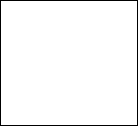 |
A little numerical exploration is useful at this point to establish some
simple mathematical facts about these infinite-order kernels. For
completeness, let us go momentarily back to the straightforward multiple
superposition of the first-order filter. If we take the ![]() limit
of the kernel of order
limit
of the kernel of order ![]() with range
with range ![]() , we might try to define
a first infinite-order kernel with infinite range as
, we might try to define
a first infinite-order kernel with infinite range as
![\begin{displaymath}
K_{\infty}^{(\infty)}\!\left(\theta-\theta'\right)
=
\fra...
... \right]^{N}
\cos\!\left[k\left(\theta-\theta'\right)\right].
\end{displaymath}](img163.png)
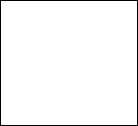 |
Since this Fourier series converges very fast, and ever faster as ![]() increases, it is very easy to use it to plot the corresponding functions.
Doing this one gets the sequence of functions shown in
Figure 3. As expected, the range increases without bound and the
kernel gets distributed more and more over the whole periodic interval,
approaching a constant function with unit integral. This means that only
the constant term of the Fourier expansion survives the limit, and that
all the other Fourier coefficients converge to zero. There is nothing too
surprising about this, since it is consistent with the fact that
increases, it is very easy to use it to plot the corresponding functions.
Doing this one gets the sequence of functions shown in
Figure 3. As expected, the range increases without bound and the
kernel gets distributed more and more over the whole periodic interval,
approaching a constant function with unit integral. This means that only
the constant term of the Fourier expansion survives the limit, and that
all the other Fourier coefficients converge to zero. There is nothing too
surprising about this, since it is consistent with the fact that
![\begin{displaymath}
\lim_{N\to\infty}
\left[
\frac{\sin(k\epsilon)}{(k\epsilon)}
\right]^{N}
=
0,
\end{displaymath}](img165.png)
so long as
![]() , which is true since
, which is true since ![]() and
and
![]() . Once again a more rigorous analysis of this limit would
require more careful consideration of the convergence of the series, since
in principle one must be careful with the interchange of the
. Once again a more rigorous analysis of this limit would
require more careful consideration of the convergence of the series, since
in principle one must be careful with the interchange of the ![]() limit and the
limit and the ![]() limit of the series. However, here too it turns
out that this rough discussion suffices for our purposes. It is quite
clear that, if we could repeat the experiment on the whole real line
instead of the periodic interval, the kernel would approach a normalized
Gaussian function that in turn would approach zero everywhere, becoming
ever wider and lower as
limit of the series. However, here too it turns
out that this rough discussion suffices for our purposes. It is quite
clear that, if we could repeat the experiment on the whole real line
instead of the periodic interval, the kernel would approach a normalized
Gaussian function that in turn would approach zero everywhere, becoming
ever wider and lower as ![]() .
.
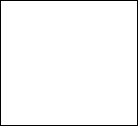 |
If we now consider once again the ![]() limit of the kernel of
order
limit of the kernel of
order ![]() with constant range
with constant range ![]() , we might try to define an
infinite-order kernel of finite range
, we might try to define an
infinite-order kernel of finite range ![]() as
as
![\begin{displaymath}
K_{\epsilon}^{(\infty)}\!\left(\theta-\theta'\right)
=
\f...
... \right]^{N}
\cos\!\left[k\left(\theta-\theta'\right)\right].
\end{displaymath}](img171.png)
Our previous analysis indicated that this has the delta ``function'' as
its limit. Plotting this kernel one gets the sequence of functions shown
in Figure 4. As one can see, the kernel in fact diverges to
positive infinity at zero. It also seems to go to zero everywhere
else. Since it still has constant integral, and since it can be easily
verified that its maximum at zero diverges to infinity as ![]() , we
must conclude that it in fact approaches a Dirac delta ``function''. More
precisely, the sequence of kernels approaches a normalized Gaussian
function that in turns approaches the delta ``function'', becoming ever
taller and narrower as
, we
must conclude that it in fact approaches a Dirac delta ``function''. More
precisely, the sequence of kernels approaches a normalized Gaussian
function that in turns approaches the delta ``function'', becoming ever
taller and narrower as ![]() , with constant area under the
graph. What we have here is a singular limit, in a way going full circle,
from the delta ``function'' at
, with constant area under the
graph. What we have here is a singular limit, in a way going full circle,
from the delta ``function'' at ![]() and back to it at
and back to it at
![]() . Therefore the
. Therefore the ![]() limit of this order-
limit of this order-![]() kernel is
not a
kernel is
not a ![]() function, but a singular object instead, which is
certainly an unexpected and surprising result.
function, but a singular object instead, which is
certainly an unexpected and surprising result.
This suggests that one may take an intermediate limit, which perhaps will
converge to a non-singular localized function, by superposing ![]() filters
with range
filters
with range
![]() , thus obtaining a second infinite-order
kernel with infinite range, given by
, thus obtaining a second infinite-order
kernel with infinite range, given by
![\begin{displaymath}
K_{\infty}^{(\infty)}\!\left(\theta-\theta'\right)
=
\fra...
... \right]^{N}
\cos\!\left[k\left(\theta-\theta'\right)\right].
\end{displaymath}](img163.png)
In fact, this exercise results in the sequence of functions seen in
Figure 5, which approaches very fast a function very similar to
a normalized Gaussian function with finite and non-zero width. Again it is
quite clear that, if we could repeat this construction on the whole real
line, then the limit would be a normalized Gaussian function, but in our
case here it is a bit deformed by its containment within the periodic
interval. When its width is small when compared to the length ![]() of
the periodic interval the Gaussian approaches zero very fast when we go
significantly away from its point of maximum, so that we may consider this
case to be paracompact, and even use this filter successfully in the
practice of physics applications. However, the exact mathematical fact is
that the range of this filter does tend to infinity when
of
the periodic interval the Gaussian approaches zero very fast when we go
significantly away from its point of maximum, so that we may consider this
case to be paracompact, and even use this filter successfully in the
practice of physics applications. However, the exact mathematical fact is
that the range of this filter does tend to infinity when ![]() , and
therefore to the whole extent of the periodic interval, if we execute all
this operation within it.
, and
therefore to the whole extent of the periodic interval, if we execute all
this operation within it.
It is possible to interpret qualitatively what happens in these three
cases in terms of the expression for the corresponding superpositions of
inner analytic functions. In the case of the straight multiple
superposition of the first-order kernel we have for the representation of
the order-![]() filter on the complex plane
filter on the complex plane
![\begin{displaymath}
w_{N\epsilon}^{(N)}(z)
=
\left(\frac{-\mbox{\boldmath$\im...
...ft(z\,{\rm e}^{\mbox{\boldmath$\imath$}[N-2n]\epsilon}\right),
\end{displaymath}](img173.png)
where we may assume that the coefficients do not diverge with ![]() , since
the function tends to a constant everywhere on the unit circle in the
, since
the function tends to a constant everywhere on the unit circle in the
![]() limit. In the case of the superposition of the first-order
kernel with decreasing range
limit. In the case of the superposition of the first-order
kernel with decreasing range ![]() , resulting on a fixed range
, resulting on a fixed range
![]() for the order-
for the order-![]() kernel, the representation of the order-
kernel, the representation of the order-![]() filter in the complex plane is
filter in the complex plane is
![\begin{displaymath}
w_{\epsilon}^{(N)}(z)
=
\left(\frac{-\mbox{\boldmath$\ima...
...(z\,{\rm e}^{\mbox{\boldmath$\imath$}[1-2n/N]\epsilon}\right),
\end{displaymath}](img174.png)
so that the extra factor of ![]() is clearly related to the divergence
at a point on the unit circle, when we make
is clearly related to the divergence
at a point on the unit circle, when we make ![]() . In the case of
the superposition of the first-order kernel with decreasing range
. In the case of
the superposition of the first-order kernel with decreasing range
![]() , resulting on a range
, resulting on a range
![]() for the
order-
for the
order-![]() kernel, the representation of the order-
kernel, the representation of the order-![]() filter in the
complex plane is
filter in the
complex plane is
![\begin{displaymath}
w_{\sqrt{N}\epsilon}^{(N)}(z)
=
\left(\frac{-\mbox{\boldm...
...ath$\imath$}\left[\sqrt{N}-2n/\sqrt{N}\right]\epsilon}\right).
\end{displaymath}](img177.png)
Note that in this case we gained a factor of ![]() rather than
rather than
![]() , which the consequence that over the unit circle the kernel
neither approaches a constant everywhere nor diverges to infinity
somewhere. In this case the coefficients seem to have well-defined finite
limits.
, which the consequence that over the unit circle the kernel
neither approaches a constant everywhere nor diverges to infinity
somewhere. In this case the coefficients seem to have well-defined finite
limits.
We must therefore conclude that, with this type of multiple superposition
of the first-order filter, and the corresponding superposition of the
singularities of the inner analytic functions in the complex plane, we are
unable to define an infinite-order kernel that is both a finite and smooth
real function, and that at the same time is localized within a compact
support, thus generating an infinite-order filter with a finite range
![]() . In order to understand why, it is useful to look at the
singularities, on the unit circle of the complex plane, of the sequence of
inner analytic functions generated by the repeated application of the
first-order filter, starting with the inner analytic function
corresponding to the zero-order kernel, which is a Dirac delta
``function'' and thus has a single first-order pole at some point on the
unit circle, as shown in [1].
. In order to understand why, it is useful to look at the
singularities, on the unit circle of the complex plane, of the sequence of
inner analytic functions generated by the repeated application of the
first-order filter, starting with the inner analytic function
corresponding to the zero-order kernel, which is a Dirac delta
``function'' and thus has a single first-order pole at some point on the
unit circle, as shown in [1].
If we look at the diagram in Figure 2, we see that as the
multiple application of the first-order filter goes on, more and more
softened singularities are superposed at the points near the center of the
diagram. Each singularity is progressively softer, but they are superposed
in increasing numbers, thus generating a coefficient in the corresponding
term in the superposition shown in Equation (6). For
each finite ![]() these coefficients may be large, but they are finite, and
therefore they do not disturb the softness of the corresponding
singularities. However, if one of the coefficients diverges in the
these coefficients may be large, but they are finite, and
therefore they do not disturb the softness of the corresponding
singularities. However, if one of the coefficients diverges in the
![]() limit, then the corresponding singularity is no longer soft
in the limit. Let us recall that the definition of a soft singularity, as
given in [2], is that the limit of the inner analytic function
to that point be finite. Because of the diverging coefficients, in this
type of superposition this may fail to be so in the
limit, then the corresponding singularity is no longer soft
in the limit. Let us recall that the definition of a soft singularity, as
given in [2], is that the limit of the inner analytic function
to that point be finite. Because of the diverging coefficients, in this
type of superposition this may fail to be so in the ![]() limit,
even if the singularities are soft for each finite value of
limit,
even if the singularities are soft for each finite value of ![]() .
.
 |
We are therefore led to the idea of changing the method of iteration of
the first-order filters in such a way that the softened singularities
never get superposed. It is not too difficult to see that one may
accomplish this by superposing filters with progressively smaller ranges,
as illustrated by the diagram in Figure 6. Given a value of
![]() , this diagram corresponds to a process in which we start by
applying the first-order filter with range
, this diagram corresponds to a process in which we start by
applying the first-order filter with range ![]() , followed by the
first-order filter of range
, followed by the
first-order filter of range ![]() , then by the filter of range
, then by the filter of range
![]() , and so on, where the range of the
, and so on, where the range of the ![]() filter
applied is given by
filter
applied is given by
![]() . Note that at the
. Note that at the ![]() iteration there are
iteration there are ![]() singularities homogeneously distributed within
the interval
singularities homogeneously distributed within
the interval
![]() . Since the ranges are scaled down
exponentially, we call this a scaled filter, and the corresponding
kernel a scaled kernel.
. Since the ranges are scaled down
exponentially, we call this a scaled filter, and the corresponding
kernel a scaled kernel.
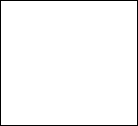 |
At the ![]() iteration there are
iteration there are ![]() singularities, each one
softened by
singularities, each one
softened by ![]() degrees, spaced from one another by
degrees, spaced from one another by
![]() ,
and spaced from the ends of the
,
and spaced from the ends of the
![]() interval by
interval by
![]() . They are, therefore, regularly distributed within the
interval
. They are, therefore, regularly distributed within the
interval
![]() , centered at
, centered at ![]() consecutive
sub-intervals of length
consecutive
sub-intervals of length
![]() . In the
. In the ![]() limit the
singularities will tend to become homogeneously distributed within the
interval
limit the
singularities will tend to become homogeneously distributed within the
interval
![]() , and indeed will tend to a countable
infinity of infinitely soft singularities distributed densely within that
interval. Since at the
, and indeed will tend to a countable
infinity of infinitely soft singularities distributed densely within that
interval. Since at the ![]() step there are
step there are ![]() such
singularities, we see that their number grows exponentially fast. However,
the singularities never get superposed. The corresponding superposition in
terms of inner analytic functions in the complex plane is given by
such
singularities, we see that their number grows exponentially fast. However,
the singularities never get superposed. The corresponding superposition in
terms of inner analytic functions in the complex plane is given by
![\begin{eqnarray*}
\bar{w}_{\epsilon_{N}}^{(N)}(z)
& = &
\left(\frac{-2^{1}\mb...
...x{\boldmath$\imath$}\left[1-(2n-1)/2^{N}\right]\epsilon}\right).
\end{eqnarray*}](img187.png)
Using the property of the first-order filter regarding its action on
Fourier expansions [10,11], it is not difficult to
write the Fourier expansion of this new scaled kernel, at the ![]() step of the construction process, which has a range
step of the construction process, which has a range ![]() such
that
such
that
![]() ,
,
![\begin{displaymath}
\bar{K}_{\epsilon_{N}}^{(N)}\!\left(\theta-\theta'\right)
...
...t)}
\right]
\cos\!\left[k\left(\theta-\theta'\right)\right],
\end{displaymath}](img189.png)
where the coefficients include a product of ![]() different sinc factors.
This product can be written as
different sinc factors.
This product can be written as

It follows that we have for this order-![]() scaled kernel
scaled kernel
As expected, this kernel indeed has a well-defined limit when
![]() , with support in the finite interval
, with support in the finite interval
![]() , as one can see in the
graph of Figure 7. The sequence of kernels converges
exponentially fast to a definite function, with a rather unusual shape.
, as one can see in the
graph of Figure 7. The sequence of kernels converges
exponentially fast to a definite function, with a rather unusual shape.
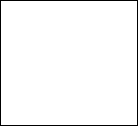 |
It is possible to demonstrate explicitly the convergence of the sequence
of scaled kernels
![]() to a
well-defined regular function
to a
well-defined regular function
![]() in the
in the
![]() limit. The proof is rather lengthy and is presented in full
in Appendix B. It depends on the following facts about this
limit, that we may establish here in order to give a general idea of the
structure of the proof. First of all, due to one of the properties of the
first-order filter [8] all kernels in the sequence have unit
integral. Second, the range
limit. The proof is rather lengthy and is presented in full
in Appendix B. It depends on the following facts about this
limit, that we may establish here in order to give a general idea of the
structure of the proof. First of all, due to one of the properties of the
first-order filter [8] all kernels in the sequence have unit
integral. Second, the range ![]() of the order-
of the order-![]() kernel is
given by the combined ranges of all the kernels used to build it, and is
therefore given by
kernel is
given by the combined ranges of all the kernels used to build it, and is
therefore given by
which is a geometric progression with ratio ![]() . We have therefore
. We have therefore
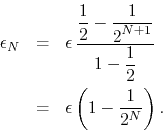
It follows therefore that in the ![]() limit
limit ![]() tends
to
tends
to ![]() ,
,
Therefore all the kernels in the sequence remain identically zero
everywhere outside the interval
![]() , so that we may
conclude that the limiting function has support within that interval. Next
we observe that, since the filtered function is defined as an average of
the original function, it can never assume values which are larger than
the maximum of the function it is applied on, or smaller than its minimum.
Therefore, since the first kernel we start with, with range
, so that we may
conclude that the limiting function has support within that interval. Next
we observe that, since the filtered function is defined as an average of
the original function, it can never assume values which are larger than
the maximum of the function it is applied on, or smaller than its minimum.
Therefore, since the first kernel we start with, with range ![]() ,
is limited within the interval
,
is limited within the interval
![]() , so are all the subsequent
kernels of the construction sequence.
, so are all the subsequent
kernels of the construction sequence.
As a consequence all these considerations, the non-zero parts of the
graphs of all the kernels in the construction sequence are contained
within the rectangle defined by the support interval
![]() and the range of values
and the range of values
![]() , which has
area
, which has
area ![]() . The area of the graph of every kernel in the construction
sequence is
. The area of the graph of every kernel in the construction
sequence is ![]() , so that it occupies one half of the area of the
rectangle. Since every scaled kernel in the construction sequence is a
continuous and differentiable function, it becomes clear that the
, so that it occupies one half of the area of the
rectangle. Since every scaled kernel in the construction sequence is a
continuous and differentiable function, it becomes clear that the
![]() limit of the sequence of kernels must also be a regular
function within this rectangle. It follows from the discussion in
Appendix B that the limit of the sequence exists and is a
regular, continuous and differentiable function, resulting in the
infinite-order scaled kernel with range
limit of the sequence of kernels must also be a regular
function within this rectangle. It follows from the discussion in
Appendix B that the limit of the sequence exists and is a
regular, continuous and differentiable function, resulting in the
infinite-order scaled kernel with range ![]()
This infinite-order scaled kernel has the deceptively simple look shown in
Figure 8. Despite appearances it contains no completely straight
segments within its support interval. Once it is shown that it is a
![]() function, it follows that its derivatives of all orders are
zero at the two extremes of the support interval, where they must match
the correspondingly zero derivatives of the two external segments, on
either side of the support interval, where the kernel is identically zero.
function, it follows that its derivatives of all orders are
zero at the two extremes of the support interval, where they must match
the correspondingly zero derivatives of the two external segments, on
either side of the support interval, where the kernel is identically zero.
A technical note about the graphs representing the ![]() limit of
various quantities is in order at this point. They were obtained
numerically from the corresponding Fourier series, using the scaled filter
of order
limit of
various quantities is in order at this point. They were obtained
numerically from the corresponding Fourier series, using the scaled filter
of order ![]() . This means that the last first-order filter used in the
multiple superposition has a range of
. This means that the last first-order filter used in the
multiple superposition has a range of
![]() . This is less
than
. This is less
than
![]() and is therefore many orders of magnitude below
any graphical resolution one might hope for, in any medium. Certainly the
errors related to the summation of the Fourier series, which were set at
and is therefore many orders of magnitude below
any graphical resolution one might hope for, in any medium. Certainly the
errors related to the summation of the Fourier series, which were set at
![]() , are the dominant ones, but still extremely small. We may
conclude that these graphs are faithful representations of the
corresponding quantities for all conceivable graphical purposes. The
programs used in creating all the graphs shown in this paper are freely
available online [12].
, are the dominant ones, but still extremely small. We may
conclude that these graphs are faithful representations of the
corresponding quantities for all conceivable graphical purposes. The
programs used in creating all the graphs shown in this paper are freely
available online [12].
It is quite simple to see that this kernel is a ![]() function. Its
Fourier series, given as the
function. Its
Fourier series, given as the ![]() limit of the Fourier expansion
in Equation (7), is certainly absolutely and uniformly
convergent, and any finite-order term-wise derivative of it results in
another series with the same properties. Since the convergence of the
resulting series is the additional condition, besides uniform convergence,
that suffices to guarantee that one can differentiate the series term-wise
in order to obtain the derivative of the function, we may conclude that
derivatives of all finite orders exist and are given by continuous and
differentiable functions. This proof of infinite differentiability of the
limit of the Fourier expansion
in Equation (7), is certainly absolutely and uniformly
convergent, and any finite-order term-wise derivative of it results in
another series with the same properties. Since the convergence of the
resulting series is the additional condition, besides uniform convergence,
that suffices to guarantee that one can differentiate the series term-wise
in order to obtain the derivative of the function, we may conclude that
derivatives of all finite orders exist and are given by continuous and
differentiable functions. This proof of infinite differentiability of the
![]() kernel now
ensures that the kernel and all its multiple derivatives are in fact zero
at the points
kernel now
ensures that the kernel and all its multiple derivatives are in fact zero
at the points
![]() .
.
An independent discussion of the existence of the derivatives of all finite orders can be found in Section B.7 of Appendix B. There one can see also that the derivatives of all orders are zero at the central point of maximum, as well as at the two extremes of the support interval. We also show in Section B.8 of Appendix B that the infinite-order scaled kernel is not analytic as a function on the periodic interval, in the real sense of the term. We do this by showing that there is a countable infinity of points, distributed densely in the support interval, where only a finite number of derivatives is different from zero. We also discuss briefly there the question of whether or not the infinite-order scaled kernel can be extended analytically to the complex plane. We discuss this in terms of the fact that it is the limit of an inner analytic function when one takes the limit to the border of the unit disk.
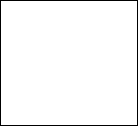 |
Given that the infinite-order scaled kernel is a ![]() function,
one may then define an infinite-order filter based on this infinite-order
scaled kernel. However, in this case it is not so simple to determine the
form of the coefficients directly in the
function,
one may then define an infinite-order filter based on this infinite-order
scaled kernel. However, in this case it is not so simple to determine the
form of the coefficients directly in the ![]() limit. In fact, the
question of whether or not it is possible to write the coefficients
directly in the
limit. In fact, the
question of whether or not it is possible to write the coefficients
directly in the ![]() limit, in some simple form, is an open
one. Note that, as was mentioned before, one must be careful with the
interchange of the
limit, in some simple form, is an open
one. Note that, as was mentioned before, one must be careful with the
interchange of the ![]() limit and the
limit and the ![]() limit of the
series. In any case, it follows that given any merely integrable
function
limit of the
series. In any case, it follows that given any merely integrable
function ![]() , the filtered function
, the filtered function
is necessarily a ![]() function, in the real sense of the term. It
is easy to see this, since the differentiations with respect to
function, in the real sense of the term. It
is easy to see this, since the differentiations with respect to ![]() at the right-hand side will act only on the infinite-order scaled kernel,
which is a
at the right-hand side will act only on the infinite-order scaled kernel,
which is a ![]() function. Therefore all the finite-order
derivatives of
function. Therefore all the finite-order
derivatives of
![]() exist, since they may be
written as
exist, since they may be
written as
where the ![]() derivative of the infinite-order scaled kernel is a
limited, continuous and differentiable function with compact support,
being therefore an integrable function. In addition to this, the changes
made in
derivative of the infinite-order scaled kernel is a
limited, continuous and differentiable function with compact support,
being therefore an integrable function. In addition to this, the changes
made in ![]() in order to produce
in order to produce
![]() have a finite range
have a finite range ![]() that can be made as small as one wishes.
that can be made as small as one wishes.
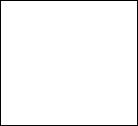 |
Let us now consider the action of such a filter on inner analytic
functions. There is no difficulty in determining what happens to the
singularities of the inner analytic functions on the unit circle, as a
consequence of the application of this infinite-order scaled filter. It is
quite clear that a single singularity of the inner analytic function at
![]() would be smeared into a denumerable infinity of softened
singularities within the interval
would be smeared into a denumerable infinity of softened
singularities within the interval
![]() on
the unit circle. This set of singularities would occupy the interval
densely, and they would be infinitely soft, since they are the result of
an infinite sequence of logarithmic integrations. Since each logarithmic
integration renders the real function on the unit circle differentiable to
one more order, in the limit one gets over that circle an infinitely
differentiable real function of
on
the unit circle. This set of singularities would occupy the interval
densely, and they would be infinitely soft, since they are the result of
an infinite sequence of logarithmic integrations. Since each logarithmic
integration renders the real function on the unit circle differentiable to
one more order, in the limit one gets over that circle an infinitely
differentiable real function of ![]() . So the resulting complex
function of
. So the resulting complex
function of ![]() must be an inner analytic function which has only
infinitely soft singularities on the unit circle and that is a
must be an inner analytic function which has only
infinitely soft singularities on the unit circle and that is a
![]() function of
function of ![]() when restricted to that circle. The same
is true for the kernel itself, if we start with a single first-order pole
at
when restricted to that circle. The same
is true for the kernel itself, if we start with a single first-order pole
at ![]() , which is the case for the order-zero kernel. Note that in
either case this real function is
, which is the case for the order-zero kernel. Note that in
either case this real function is ![]() right on top of a
densely-distributed set of singularities of the corresponding inner
analytic function, which is somewhat unexpected, even if they are
infinitely soft singularities.
right on top of a
densely-distributed set of singularities of the corresponding inner
analytic function, which is somewhat unexpected, even if they are
infinitely soft singularities.
As a simple example, let us consider the unit-amplitude square wave, which is a discontinuous periodic function, as one can see in Figure 9, that shows the filtered function superposed with the original one. The filtered function was obtained from its Fourier series, which due to the properties of the first-order filter is easily obtained, being given by
![\begin{displaymath}
f_{\epsilon_{N}}(\theta)
=
\frac{4}{\pi}
\sum_{j=0}^{\in...
...k\epsilon}{2^{n}}\right)
\right]
\sin\!\left(k\theta\right),
\end{displaymath}](img215.png)
where ![]() , for a large value of
, for a large value of ![]() . The graph of the original
function has two straight horizontal segments and two points of
discontinuity at
. The graph of the original
function has two straight horizontal segments and two points of
discontinuity at ![]() and at
and at ![]() . It follows that the
corresponding inner analytic function has two borderline hard
singularities at these two points. Let us consider all the instances of
the first-order linear low-pass filter used for the construction of the
infinite-order scaled kernel, for all construction steps
. It follows that the
corresponding inner analytic function has two borderline hard
singularities at these two points. Let us consider all the instances of
the first-order linear low-pass filter used for the construction of the
infinite-order scaled kernel, for all construction steps ![]() and any value
of
and any value
of ![]() . Since the linear low-pass filters are all the identity
on the segments that are linear functions, up to a distance of
. Since the linear low-pass filters are all the identity
on the segments that are linear functions, up to a distance of ![]() to one of the singularities, the function would never be changed at all
outside the two intervals
to one of the singularities, the function would never be changed at all
outside the two intervals
![]() and
and
![]() , when one applies to it any of the
order-
, when one applies to it any of the
order-![]() scaled filters. After the end of the process of application of
the infinite-order scaled filter these two intervals would contain
segments of
scaled filters. After the end of the process of application of
the infinite-order scaled filter these two intervals would contain
segments of ![]() functions of
functions of ![]() , and in fact the whole
resulting function would be a
, and in fact the whole
resulting function would be a ![]() function of
function of ![]() , over the
whole unit circle.
, over the
whole unit circle.
 |
Another similar example can be seen in Figure 10, which shows the case of the unit-amplitude sawtooth wave, which also has the same two points of discontinuity and therefore corresponds to an inner analytic function with two similar borderline hard singularities at these points. The filtered function was obtained from its Fourier series,
![\begin{displaymath}
f_{\epsilon_{N}}(\theta)
=
-\,
\frac{4}{\pi}
\sum_{j=1}...
...k\epsilon}{2^{n}}\right)
\right]
\sin\!\left(k\theta\right),
\end{displaymath}](img222.png)
where ![]() , for a large value of
, for a large value of ![]() . In Figure 11 one can see
the case of the triangular wave, which is a continuous function with two
points of non-differentiability at
. In Figure 11 one can see
the case of the triangular wave, which is a continuous function with two
points of non-differentiability at ![]() and at
and at ![]() , and
therefore corresponds to an inner analytic function with two borderline
soft singularities at these points. The filtered function was obtained
from its Fourier series,
, and
therefore corresponds to an inner analytic function with two borderline
soft singularities at these points. The filtered function was obtained
from its Fourier series,
![\begin{displaymath}
f_{\epsilon_{N}}(\theta)
=
-\,
\frac{8}{\pi^{2}}
\sum_{...
...k\epsilon}{2^{n}}\right)
\right]
\cos\!\left(k\theta\right),
\end{displaymath}](img224.png)
where ![]() , for a large value of
, for a large value of ![]() . In all cases we chose a rather
large value for
. In all cases we chose a rather
large value for ![]() as compared to its maximum value
as compared to its maximum value ![]() , namely
, namely
![]() , in order to render the action of the scaled infinite-order filter
clearly visible. What we seem to have here is a factory of
, in order to render the action of the scaled infinite-order filter
clearly visible. What we seem to have here is a factory of ![]() functions of
functions of ![]() on the unit circle. Starting with virtually any
integrable function, we may consider the application of the
infinite-order scaled filter in order to produce a
on the unit circle. Starting with virtually any
integrable function, we may consider the application of the
infinite-order scaled filter in order to produce a ![]() function
on the unit circle, making changes only with a range
function
on the unit circle, making changes only with a range ![]() that can
be as small as we wish.
that can
be as small as we wish.
Once we have the infinite-order scaled filter defined within the periodic
interval, it is simple to extend it to the whole real line. Considering
that the infinite-order scaled kernel and all its derivatives are zero at
the two ends of its support interval, we may just take that support
interval and insert it into the real line. If we make the new
infinite-order scaled kernel identically zero outside the support
interval, in all the rest of the real line, we still have a ![]() function. This is so because at the two points of concatenation the two
lateral limits of the kernel are equal, being both zero, as are the two
lateral limits of its first derivative, and the same for all the
higher-order derivatives. Therefore, we may also define an infinite-order
scaled filter acting on the whole real line, that maps any integrable real
function to corresponding
function. This is so because at the two points of concatenation the two
lateral limits of the kernel are equal, being both zero, as are the two
lateral limits of its first derivative, and the same for all the
higher-order derivatives. Therefore, we may also define an infinite-order
scaled filter acting on the whole real line, that maps any integrable real
function to corresponding ![]() functions.
functions.